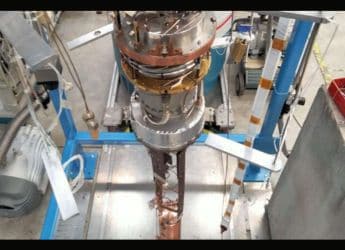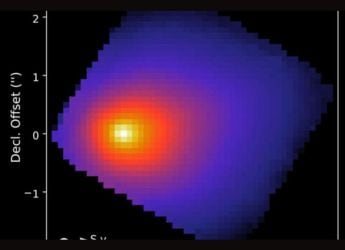- Home
- Others
- Others News
- Researchers develop new tool to improve robots' visual comprehension
Researchers develop new tool to improve robots' visual comprehension

Object recognition is one of the most widely studied problems in computer vision, researchers said.
To improve robots' ability to gauge object orientation, Jared Glover, a graduate student in Massachusetts Institute of Technology (MIT)'s Department of Electrical Engineering and Computer Science, is exploiting a statistical construct called the Bingham distribution.
In a paper to be presented at the International Conference on Intelligent Robots and Systems, Glover and MIT alumna Sanja Popovic, who is now at Google, describes a new robot-vision algorithm, based on the Bingham distribution, that is 15 percent better than its best competitor at identifying familiar objects in cluttered scenes.
That algorithm, however, is for analysing high-quality visual data in familiar settings.
Because the Bingham distribution is a tool for reasoning probabilistically, it promises even greater advantages in contexts where information is patchy or unreliable.
In cases where visual information is particularly poor, the algorithm offers an improvement of more than 50 percent over the best alternatives.
"Alignment is key to many problems in robotics, from object-detection and tracking to mapping," Glover said.
"And ambiguity is really the central challenge to getting good alignments in highly cluttered scenes, like inside a refrigerator or in a drawer. That's why the Bingham distribution seems to be a useful tool, because it allows the algorithm to get more information out of each ambiguous, local feature," Glover said.
One reason the Bingham distribution is so useful for robot vision is that it provides a way to combine information from different sources, researchers said.
Determining an object's orientation entails trying to superimpose a geometric model of the object over visual data captured by a camera ? in the case of Glover's work, a Microsoft Kinect camera, which captures a 2-D colour image together with information about the distance of the colour patches.
In experiments involving visual data about particularly cluttered scenes - depicting the kinds of environments in which a household robot would operate - Glover's algorithm had about the same false-positive rate as the best existing algorithm: About 84 percent of its object identifications were correct, versus 83 percent for the competition.
But it was able to identify a significantly higher percentage of the objects in the scenes - 73 percent versus 64 percent.
Catch the latest from the Consumer Electronics Show on Gadgets 360, at our CES 2026 hub.
Related Stories
- Samsung Galaxy Unpacked 2025
- ChatGPT
- Redmi Note 14 Pro+
- iPhone 16
- Apple Vision Pro
- Oneplus 12
- OnePlus Nord CE 3 Lite 5G
- iPhone 13
- Xiaomi 14 Pro
- Oppo Find N3
- Tecno Spark Go (2023)
- Realme V30
- Best Phones Under 25000
- Samsung Galaxy S24 Series
- Cryptocurrency
- iQoo 12
- Samsung Galaxy S24 Ultra
- Giottus
- Samsung Galaxy Z Flip 5
- Apple 'Scary Fast'
- Housefull 5
- GoPro Hero 12 Black Review
- Invincible Season 2
- JioGlass
- HD Ready TV
- Laptop Under 50000
- Smartwatch Under 10000
- Latest Mobile Phones
- Compare Phones
- OPPO Reno 15 Pro Max
- Honor Win RT
- Honor Win
- Xiaomi 17 Ultra Leica Edition
- Xiaomi 17 Ultra
- Huawei Nova 15
- Huawei Nova 15 Pro
- Huawei Nova 15 Ultra
- Asus ProArt P16
- MacBook Pro 14-inch (M5, 2025)
- OPPO Pad Air 5
- Huawei MatePad 11.5 (2026)
- Xiaomi Watch 5
- Huawei Watch 10th Anniversary Edition
- Acerpure Nitro Z Series 100-inch QLED TV
- Samsung 43 Inch LED Ultra HD (4K) Smart TV (UA43UE81AFULXL)
- Asus ROG Ally
- Nintendo Switch Lite
- Haier 1.6 Ton 5 Star Inverter Split AC (HSU19G-MZAID5BN-INV)
- Haier 1.6 Ton 5 Star Inverter Split AC (HSU19G-MZAIM5BN-INV)

















